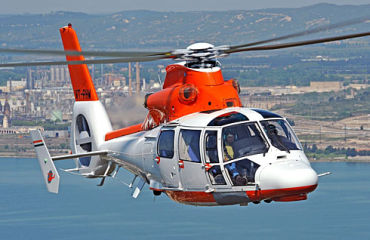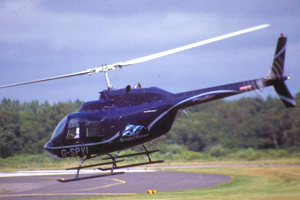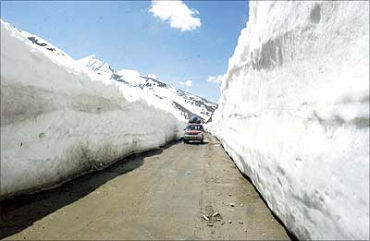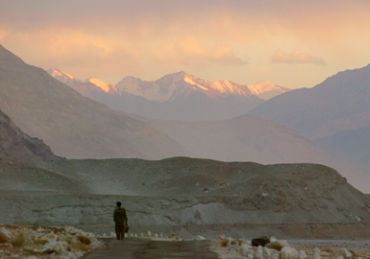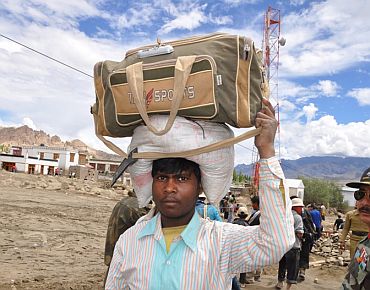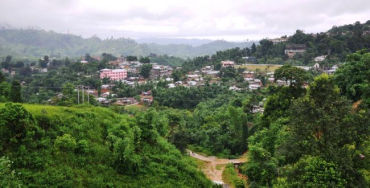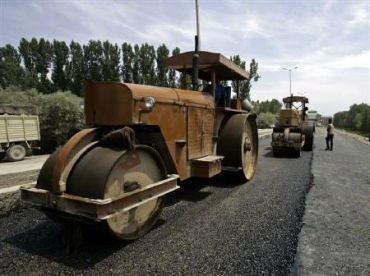 | « Back to article | Print this article |
Pawan Hans grounding halts work near China border
With Pawan Hans' helicopters no longer available to ferry bulldozers and materials to road building sites in remote areas, this crucial programme is experiencing further delay.
On April 19, a Pawan Hans Mi-172 helicopter had crashed near Tawang, killing 17 passengers as well as crew members and grievously injuring five more.
Click NEXT to read more...
Pawan Hans grounding halts work near China border
On April 30, another Pawan Hans AS350 B3 helicopter crashed near Sela Pass, killing Arunachal Pradesh Chief Minister Dorjee Khandu and four others on board.
Since then, Pawan Hans has suspended operations in the North-East region.
These grounded helicopters have been central to BRO's success in by-and-large meeting tough road building schedules.
Building sequentially, or starting from one end of a proposed road and working steadily to the other end, is a slow process.
Instead, BRO divides roads into segments, selecting multiple 'attack points' to which road building materials are heli-lifted. Work then proceeds simultaneously from each attack point.
Click NEXT to read more...
Pawan Hans grounding halts work near China border
Since BRO was using a Pawan Hans Mi-172 helicopter to carry a dismantled bulldozer to Thingbu, building has been stalled until it flies again.
The Indian Air Force has already expressed its inability to support the BRO road building, since its helicopters are fully committed in provisioning the army's remote border outposts.
Click NEXT to read more...
Pawan Hans grounding halts work near China border
Another 12 border roads that BRO is building along the Sino-Indian border in Ladakh are not affected by the Pawan Hans grounding.
However, the Director General Border Roads, Lieutenant General S Ravi Shankar, struck an upbeat note at BRO's 51st Raising Day celebrations, declaring that these 39 roads would be completed by 2013.
He said 25 per cent of the BRO current annual budget of Rs. 5,400 crore (Rs. 54 billion) was earmarked for Sino-Indian border roads.
Click NEXT to read more...
Pawan Hans grounding halts work near China border
Top MoD sources told Business Standard that the MoD's general staff long-term perspective plan caters for Rs. 57,000 crore (Rs. 570 billion) to be spent by BRO on new Sino-Indian border roads by 2022.
Despite this, India trails China substantially in building border infrastructure.
Shankar said: "It is not fair to compare us with China. They began work in the 1970s and 1980s. In those days, we were making single-lane roads, which we thought would be enough.
Click NEXT to read more...
Pawan Hans grounding halts work near China border
Senior BRO officers highlighted another emerging problem in executing its expanded road building programme, which the Prime Minister's Office monitors closely.
The rolling out of the National Rural Employment Guarantee Scheme has resulted in growing reluctance among labourers - traditionally recruited from eastern states such as Jharkhand, Orissa and Bihar - to leave their villages for the gruelling manual work involved in building border roads.
Click NEXT to read more...
Pawan Hans grounding halts work near China border
"That amounts to Rs. 120-170 per day, even in the tough conditions in which they work and live. As a result, they prefer to obtain employment at home under NREGA," says DGBR.
Also, depleting BRO's traditional labour pool is the growing demand from companies that are building hydel power projects in Arunachal Pradesh.
"The hydel companies come and offer our labourers Rs. 25 more than us. What can we do?" said another BRO officer.
Click NEXT to read more...
Pawan Hans grounding halts work near China border
Alongside its 36,600 permanent employees, BRO has a workforce of about one lakh casual labourers.
Over the last 51 years, BRO has built a 48,300-km network of border roads in India, 36 km of major bridges, and 19 airfields.
Click NEXT to read more...
Pawan Hans grounding halts work near China border
In Myanmar, it has built the 160-kilometre road connecting Tamu-Kalemyo-Kalewa.
In Bhutan, it has built a high percentage of the roads, as well as the international airport at Paro.
And, in Tajikistan, at India's only overseas military base in Ainyi, it rebuilt the runway.

